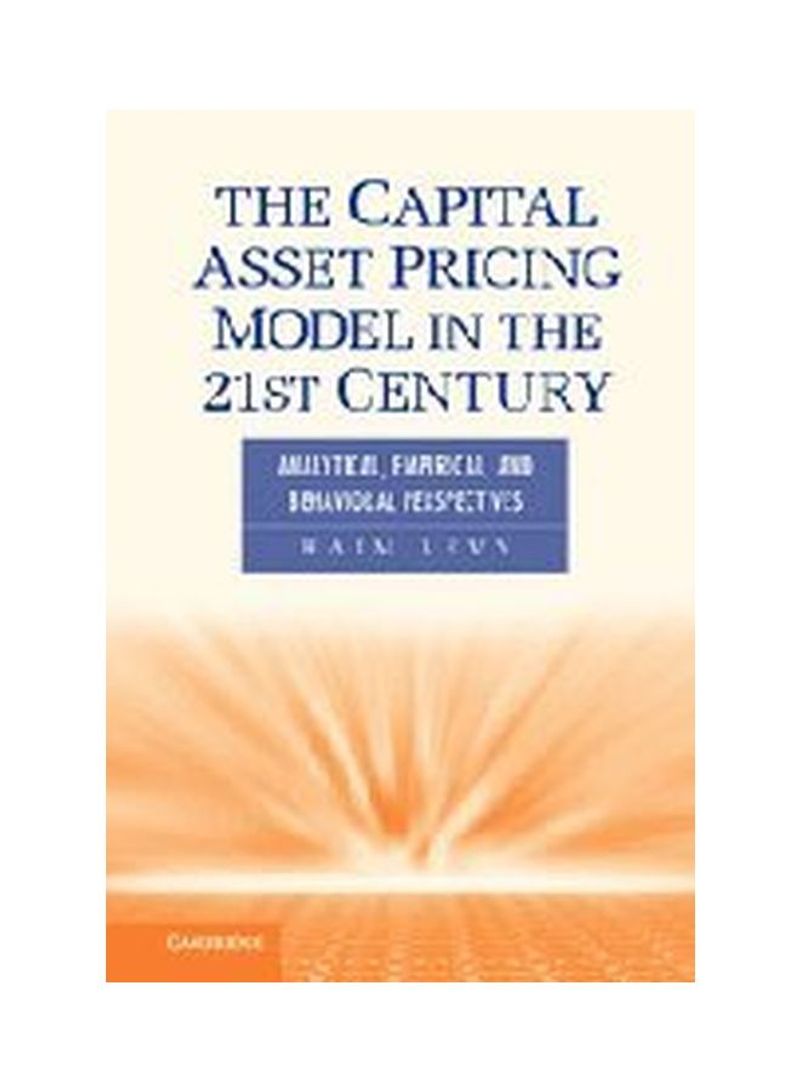The Capital Asset Pricing Model In The 21st Century Hardcover
Recommend
Sort by
Rating
Date
Specifications
Country of Origin
India
Author 1
Haim Levy
Book Description
The Capital Asset Pricing Model (CAPM) and the mean-variance (M-V) rule, which are based on classic expected utility theory, have been heavily criticized theoretically and empirically. The advent of behavioral economics, prospect theory and other psychology-minded approaches in finance challenges the rational investor model from which CAPM and M-V derive. Haim Levy argues that the tension between the classic financial models and behavioral economics approaches is more apparent than real. This book aims to relax the tension between the two paradigms. Specifically, Professor Levy shows that although behavioral economics contradicts aspects of expected utility theory, CAPM and M-V are intact in both expected utility theory and cumulative prospect theory frameworks. There is furthermore no evidence to reject CAPM empirically when ex-ante parameters are employed. Professionals may thus comfortably teach and use CAPM and behavioral economics or cumulative prospect theory as coexisting paradigms.
ISBN-10
1107006716
ISBN-13
9781107006713
Language
English
Publisher
Cambridge University Press
Publication Date
31 Oct 2011
Number of Pages
458
About the Author
Haim Levy is Miles Robinson Professor of Business Administration at the Hebrew University of Jerusalem and Dean of the Academic Center of Law and Business, Israel. The author of hundreds of articles in leading academic journals and about twenty books, he has obtained the ranking of the most prolific researcher in finance in the world covering the forty years through 1986 and the most prolific researcher in finance in the world in the core sixteen finance journals covering the fifty-year period through 2005. A co-author with Nobel Laureates Harry Markowitz and Paul Samuelson, Professor Levy's major research contributions have been to the field of stochastic dominance, which sets forth the criteria for decision making under conditions of uncertainty, in both expected utility and prospect theory paradigms. He has also developed economic models for equilibrium asset pricing in an imperfect market. Professor Levy received the Hebrew University's Prize for Excellence in Research in 1996 and the Emet Prize in 2006. He has served as economic adviser to the Bank of Israel and held a University Professor position at the University of Florida and visiting academic positions at the University of California, Berkeley and the Wharton School, University of Pennsylvania. He received his Ph.D. from the Hebrew University in 1969 and has held a full professorship there since 1976.
Editorial Review
Currently, trillions of dollars are managed with the aid of quantitative techniques. Major paradigms of quantitative finance include expected utility theory, mean-variance optimization, the closely-related capital asset pricing model, prospect theory, and (Professor Levy's own creation) stochastic dominance. In this book, Professor Levy presents a penetrating analysis of the relationships among these paradigms, often finding mutual support where others find only conflict.' Harry Markowitz, Nobel Laureate, University of California, San Diego 'Levy's book should be required reading for anyone who wants to learn about asset pricing; it is also an essential reference for anyone who wants to contribute to the immense literature in the field, the most important subject in the entire field of finance.' Richard Roll, University of California, Los Angeles 'Here in one volume is a presentation, analysis, and discussion of some of the key pillars of modern financial theory: mean-variance analysis, the capital asset pricing model, expected utility theory, and cumulative prospect theory. Haim Levy presents each theory carefully and completely, discusses the relevant arguments and evidence, and argues convincingly that practitioners and academics should adopt a synthesis that incorporates major elements of these approaches. A real tour de force from one of the major contributors to the field.' William F. Sharpe, Nobel Laureate, Stanford University "Currently, trillions of dollars are managed with the aid of quantitative techniques. Major paradigms of quantitative finance include expected utility theory, mean-variance optimization, the closely-related capital asset pricing model, prospect theory, and (Professor Levy's own creation) stochastic dominance. In this book, Professor Levy presents a penetrating analysis of the relationships among these paradigms, often finding mutual support where others find only conflict." - Harry Markowitz, Nobel Laureate, University of California, San Diego "Levy's book should be required reading for anyone who wants to learn about asset pricing; it is also an essential reference for anyone who wants to contribute to the immense literature in the field, the most important subject in the entire field of finance." - Richard Roll, Anderson School of Management, University of California, Los Angeles "Here in one volume is a presentation, analysis, and discussion of some of the key pillars of modern financial theory: mean-variance analysis, the capital asset pricing model, expected utility theory, and cumulative prospect theory. Haim Levy presents each theory carefully and completely, discusses the relevant arguments and evidence, and argues convincingly that practitioners and academics should adopt a synthesis that incorporates major elements of these approaches. A real tour de force from one of the major contributors to the field." - William F. Sharpe, Nobel Laureate, Stanford University



